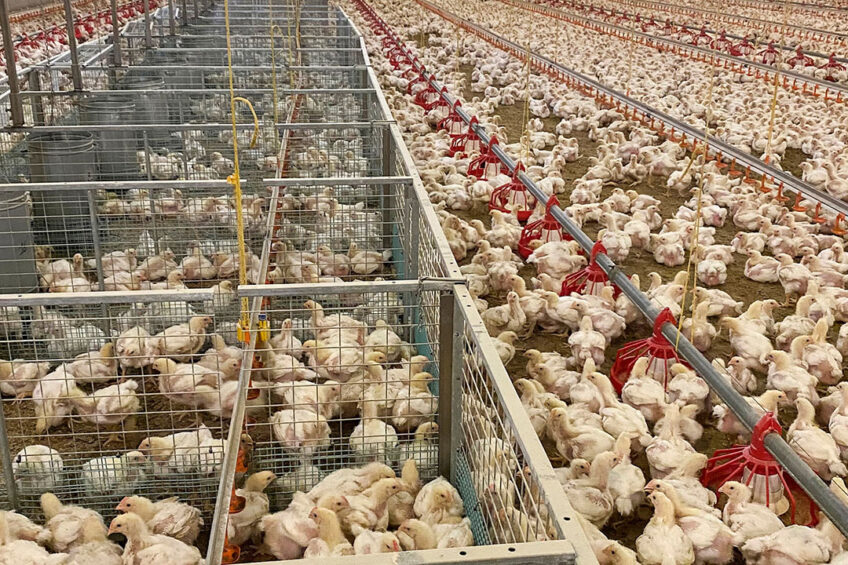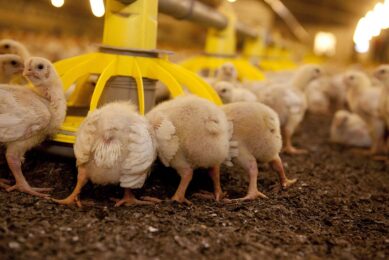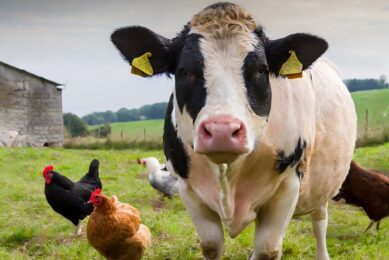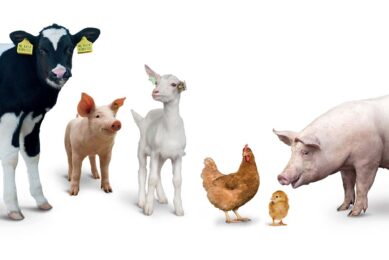Chronic gut inflammation – a hidden cost

‘Chronic gut inflammation’ in intensive farming and its link to production losses is becoming increasingly evident. Controlling the microflora in the lumen and strengthening intestinal integrity can reduce the need for medication.
Chronic ‘low-grade’ intestinal inflammation has a negative impact on the operational productivity of modern poultry producers. In layman terms, part of the bird’s feed intake and energy is taken up in a constant attempt to combat a type of chronic inflammatory response, which translates to significant losses. Another ignored consequence is that the onset of such chronic inflammatory ‘activation’ may be linked to increased susceptibility to disorders and disease like Clostridium perfringens overgrowth.
Interestingly, recent research has shown that antibiotics used as AGPs are not only successful at controlling enteropathogens and sub-clinical diseases but that they are also effective against inflammation. The drive to remove AGPs has led to a plethora of solutions that target pathogens, and to certain extent subclinical diseases, but managing chronic low-grade intestinal inflammation has been elusive to prove, at least until now.
Diet plays a key role in chronic intestinal inflammation since some feed ingredients are potent stimulators of the immune response.
Chronic inflammation not be ignored
In partnership with Texas A&M University and Mike Kogut from USDA, Innovad is performing cutting-edge research. “However other (biotic and abiotic) factors within the real production environment exert a negative additive effect” said Dr Christos Gougoulias, Innovad’s Director of Innovation.
Gabriela Cardoso, Ph.D. candidate at Texas A&M University explained: “The results of our most recent paper published in the ‘Frontiers in Immunology’ Journal, allowed us to build a better understanding of chronic intestinal inflammation thanks to 2 novel models and identify 2 novel non-invasive biomarkers as well.” The characteristics of such inflammatory responses should not be ignored as it was discovered for the first time that intestinal chronic inflammation evolves in a spatial and temporal pattern, with the duodenum and jejunum affected early (at 14 days of age), whereas the ileum was compromised at a later stage (by 28 days of age) (Figure 1).
Figure 1 – Inflammatory response in the gut days 14-36.

The importance of realism
Although experimental set-ups are important in understanding the characteristics of the intestinal inflammation development in broilers, their main drawback is that they lack a certain level of realism. Often the Industry questions: What is the relevance of feed restriction or the use of a chemical like dexamethasone with real production?
The biggest challenge perhaps so far has been how we define and quantify chronic low-grade gut inflammation. Until now numerous academic attempts aimed at developing models of chronic gut inflammation, a term often intertwined with ‘dysbacteriosis’, ‘dysbiosis’, ‘gut barrier dysfunction’, ‘gut failure’ ‘intestinal permeability’, or simply ‘leaky gut’.
“All this has really puzzled us for a number of years when we decided to follow a simple but pioneering approach. We decided to stop reproducing artificially and arbitrarily challenges seen in the real environment and instead, we went inside the real production to study the impact of chronic intestinal inflammation, as you can see in the photo,” said Dr Alireza Khadem, Innovad’s R&D Manager.
The novel model has resulted in well-defined intestinal dysbacteriosis and low-level of coccidiosis, time after time at different seasons. On one occasion, during the heatwave in the summer of 2020, the birds inside the farm experienced temperatures as high as 32°C for ~14 hours/day for more than 8 consecutive days, when at that growth stage the normal barn temperature should be ~ 22-24°C. “This is the advantage of working inside the real production. The novelty of our chronic gut inflammation model is that it accounts for all stress points manifested in real conditions” explained Dr Khadem.
The novel findings
Interestingly, it was observed that the level of the resulted dysbacteriosis in other academic approaches has perhaps been un(der)-realistic, when compared to the real production. For the very first time, upon interrogation of a biomarker selection, it was discovered that although both intestinal and systemic oxidative stress may be ‘reduced’ over time, its counterpart (intestinal and systemic) inflammatory and immune responses exert a ‘cumulative impact over time’, which extend well beyond the initial ‘trigger’.
“In other words, we discovered that the consequences of an oxidative stress type of ‘trigger’ persist in time and translate in some form of chronic inflammatory and immune ‘activation” said Dr Gougoulias. In fact, the novel findings help explain how intestinal inflammation gets chronified in modern poultry production and thus, results in economic losses.
Figure 2- Analysis of Variance for FCR of broiler chickens (Ross 308) fed with a dietary-induced challenge within a real production set-up, incorporating different doses of Lumance.

Developing new solutions
The novel findings were fully considered during the evaluation of our precision technology Lumance, which aims not only performance but also gut health optimisation. In a nutshell, Lumance:
- Alleviated the negative consequences of chronic gut inflammation
- Improved BW, FCR and ROI in a dose response manner (Figure 2)
- Accompanied by the statistical reduction of key ‘gut health’ biomarkers related to:
- Gut integrity
- Gut and systemic oxidative stress
- Gut and systemic inflammation and immune over-activation
“Moreover, our research has identified potential biomarkers in blood and faeces to monitor chronic gut inflammation in chickens. The industry is constantly looking for tools to measure gut health to evaluate performance and decide when and how to use functional in-feed technologies. Ideally, samples should be easy to collect and be minimally invasive, while providing a rapid answer where it is needed – on the farm” Dr Gougoulias explained.
Jason Lorjé, Innovad’s Marketing Director, added: “The outcomes of the research will hopefully allow us to develop on-farm diagnostics for the detection of low-grade intestinal inflammation in intensive poultry farming, so stay tuned.”
HIGHTLIGHTS
– Chronic low-grade gut Inflammation in intensive farming is often unseen clinically, but is felt economically as it impairs the birds’ efficiency to reach their genetic potential
– This chronic inflammatory ‘activation’ may be linked to increased susceptibility to disorders and disease like necrotic enteritis
– AGPs not only have been successful at controlling sub-clinical diseases but also inflammation
– The novelty of our chicken chronic gut inflammation model is that it accounts for all stress points manifested in real conditions
– We discovered that the consequences of ‘stress triggers’ persist in time and translate in a chronic inflammatory and immune ‘activation’, which eats up part of the bird’s growth
– In-feed functional technologies should wregulate such chronic inflammatory responses and improve gut integrity, like Lumance in this instance
Author:
Dr Alireza Khadem, Innovad R&D Manager
 Beheer
Beheer






 WP Admin
WP Admin  Bewerk bericht
Bewerk bericht